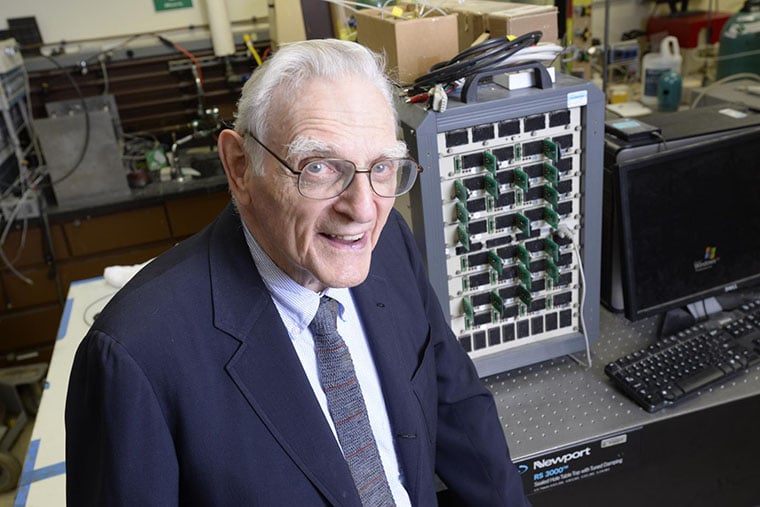The problem with batteries is that they just don’t hold enough energy. Engineers have been working hard on them for decades, improving their capacities and reliability by solid increments, but there have been no revolutionary advances. Now a new type of solid state rechargeable battery has emerged from the laboratories of the Cockrell School of Engineering at the University of Texas at Austin, promising to triple their capacity.
The concept appears to have originated with now Cockrell Senior Research Fellow Maria Helena Braga while she was with University of Porto in Portugal, but by collaborating with Professor John Goodenough and researcher Andrew J Murchison at UT Austin, the team has been able develop new versions of solid electrolytes with improved properties.

Professor Goodenough is the 94 year old co-inventor of the lithium ion battery, so he knows his stuff.
Existing high capacity batteries use liquid electrolytes. In certain charging circumstances metallic elements called “dendrites” can form within these, reducing their efficiency and potentially leading to short circuits which can result in fires. And we all know how expensive short circuits can be in batteries.
From the gadget lover’s point of view, these batteries are likely not just safer, but way better in other ways than existing battery technology. First, they pack up to three times the energy density as existing batteries. That is, for a given volume of battery you get three times the life span. If in a car, you get three times the range.
Second, they can endure more discharge, recharge cycles. The researchers “have demonstrated more than 1,200 cycles with low cell resistance”.
Third, they work at lower temperatures than existing high capacity technologies, having been tested at down to -20 Celcius.
There’s a tremendous payoff for quick commercialisation of this technology if it lives up to its claimed lab performance. UT Austin says that it “is actively negotiating license agreements with multiple companies engaged in a variety of battery-related industry segments.”

Much of the talk is of batteries for electric cars, and you can see why. If the range of a Nissan Leaf is 135 kilometres, and of a Tesla Model S is up to 426 kilometres, a tripling of capacity would increase the former to over 400km, which is at least in the same ballpark as a normal car, and for the Telsa to almost 1300km. That’s way more than you need to drive from Sydney to Brisbane.
But I’m hoping they’ll work in small sizes as well. A smart phone that works all day with heavy use, or a week with light use. How good would that be! A 24 hour notebook computer. A three day smart watch. A LED flashlight that’ll run for several hours.
Revolutionary advances in battery technology would solve all the world’s energy problems. The issue is not the generation of electrical power. There’s plenty of power, whether from renewables or from traditional generation sources. It’s just that often it’s located in the wrong place, or abundant at the wrong time. High capacity batteries will allow us to get the power from where and when it is, to where and when it needs to be in order to be useful.
A tripling of battery capacity isn’t enough to solve all that, but it’s a solid step in the right direction.
The research has been published in the journal Energy & Environmental Science as “Alternative strategy for a safe rechargeable battery”, with Ms Braga as lead author. I doubt that one would find it an easy read, though, unless one is familiar with such properties as “cation conductivity” and “motional enthalpy”. And they’re just from the first sentence of the abstract.









Were these the sodium batteries from another article? I recall the comments about Proff. Goodenough.